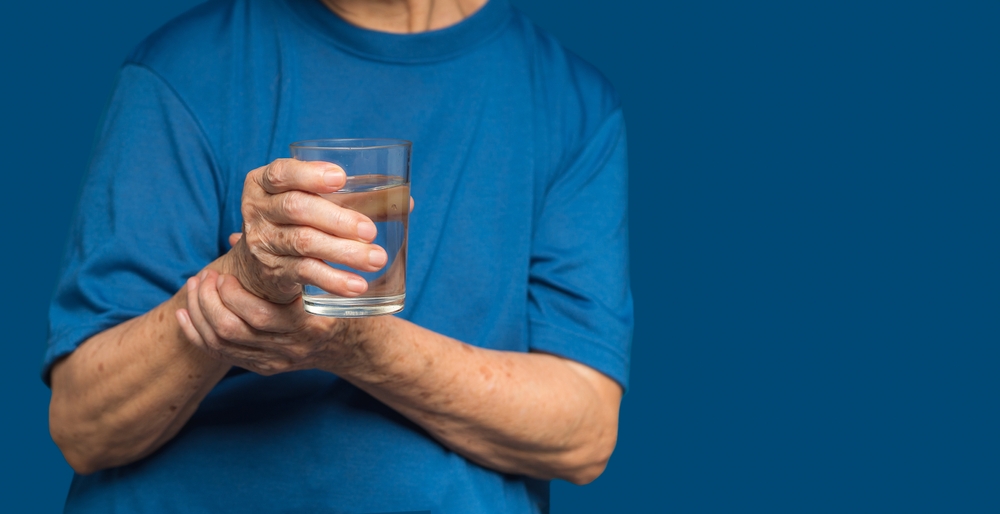
Sexual intimacy, when performed positively, can help build relationships, improve self-image, and increase one’s satisfaction with life. However, for women who suffer from some form of sexual dysfunction, painful intercourse, low sex drive, or difficulties with orgasms, sex can hinder one’s ability to enjoy life fully. These conditions currently have treatment options that extend through medication, mental health therapy, and treating underlying conditions to resolve the problem.
The conventional treatment methods generally work, but there are patients who continue to suffer from various conditions. Thankfully, regenerative medicine may provide an alternative form of treatment by using platelet-rich plasma to improve sexual function and help women achieve better results. Let’s discuss the conditions before discussing how regenerative medicine can help.
Painful Intercourse (Dyspareunia)
While painful intercourse can happen at one point in a person’s life, painful intercourse that consistently occurs requires treatment. Medically known as dyspareunia, this form of painful intercourse is a persistent, recurring genital pain that can happen before, during, and after intercourse. More often occurring with women than men, the problem is described as sharp and intense. Due to its many possible causes, treatment for painful intercourse varies according to the person’s physical and emotional state.
Both men and women can experience painful intercourse, but it most often occurs in women. According to the American College of Obstetricians and Gynecologists, around 75% of women have painful intercourse at some point in their lives or about 3 in 4 women. However, this statistic only reports painful intercourse as a temporary problem, but for those who have had painful intercourse long-term, medical treatment should be sought. Long-term dyspareunia is experienced by somewhere between 3-18% of the population.
The causes of the pain depend on the point at which the pain occurs. Any signs of pain that occur during penetration can range from mild concerns to more serious ones, such as:
- Vaginal Dryness – Often due to not enough foreplay, a lack of lubrication can indicate dropped estrogen levels and can indicate early signs of menopause.
- Pelvic Injury – Any injury to the pelvic area from childbirth to accidents can cause intense sharp pain, and sexual intercourse can continue to irritate the area.
- Infections – Urinary tract infections, yeast infections, and other sexually transmitted diseases can cause painful intercourse, which requires treatment.
- Vaginitis – Known as inflammation of the vagina, vaginitis can be caused by yeast infections, parasites, sexually transmitted diseases, and viruses.
- Endometriosis – When the uterus’ lining grows over the ovaries, bowels, and tissues lining the pelvic area, endometriosis can cause substantial pain during intercourse and can because of infertility and painful periods.
- Pelvic Inflammatory Disease – This infection of the reproductive organs can cause serious complications if not treated, as the infection can spread to the bloodstream and can be life-threatening.
- Uterine Fibroids – These abnormal growths throughout the uterus can cause severe pain and heavy periods.
A reduction in sexual desire, emotions intertwined with sexual activity, and other psychological and physiological conditions can affect intercourse and cause dyspareunia, including:
Mental health disorders
Anxiety, depression, fears of intimacy, self-image issues, and stress can cause painful intercourse contributed by a low arousal level.
Vaginismus
Vaginismus occurs when the muscles controlling the vaginal wall contract, preventing penetration and intercourse. This condition often occurs as a result of emotional factors and physical trauma from sexual abuse.
Sexual Abuse & Trauma
Sexual abuse can play a heavy role in the psychological responses to sexual intimacy, causing the pelvic muscles to tighten during intercourse.
Treatment Options
For women seeking treatments for painful intercourse, treatment options vary depending on the patient, their medical history, and the diagnosed cause of pain. Those current treatment options include:
Medications
Any infections or medical conditions causing the pain can be treated with medications and potentially resolve the problem. For instance, those with post-menopause can use topical estrogen medications and apply it directly to the vagina to provide adequate lubrication.
Therapy
Some forms of therapy, such as sex therapy, counseling, and desensitization therapy, can improve relaxation techniques, work through traumatic experiences, and reconnect with partners to restore sexual intimacy.
Gynecologist Visit
If the pain comes from a chronic condition such as fibroids, then gynecologists can address those issues. Visiting a gynecologist can allow them to provide medications, hormonal treatments, and other forms of advice to treat painful intercourse and suggest other possible conditions causing painful intercourse.
Low Libido
Unlike painful intercourse, low sex drive or low libido is a personalized measurement of sexual activity, and for women, those measurements vary. However, anyone who suffers from low libido can find that it’s hindering their relationships, impacting their self-image, and greatly affecting their lives. Low libido occurs in one out of every ten women and can occur from numerous biological and environmental changes.
Low sex drive is the person’s relationship with sexual desire. Because each person’s libido is measured individually by their preferences and desires, in many cases, low libido can be comfortable for the person and in relationships. However, when a partner’s mismatch with their libidos, it can cause personal strife, leading to a lack of satisfaction on both ends.
Low libido can come from multiple causes, including:
Medications
Certain prescription drugs, including antidepressants such as serotonin reuptake inhibitors, can lower sex drive. Medications for treating health conditions such as diabetes, high blood pressure, and thyroid issues can also impact sexual drive.
Menopause
For women, age and menopause have a distinct connection between how hormone levels drop as they age and how their desire for sex does the same. When it’s hormonal, the physical changes that occur during menopause can cause low libido and inadvertently cause painful intercourse.
Hormonal problems
An imbalance of neurotransmitters throughout the brain can inhibit sexual desire, leading to low libido. Hormonal imbalances can be caused by other health conditions, such as hypothyroidism, causing a lack of sexual drive.
Hypoactive Sexual Desire Disorder
Occurring in about 1 in 10 women, this medical condition indicates a low sexual drive creating a lack of sexual fantasies and lack of interest in sex. Often occurring in women who previously had a sexual drive, this condition is diagnosed by personal distress associated with the lack of libido.
Treatment Options
To correct this condition, gynecologists and obstetricians have provided multiple methods for treating low libido, such as:
Medications
Prescriptions such as Addyi, Vyleesi, and Vaginal DHEA have been used to correct vaginal dryness and improve sex drive. For those on current medications for other conditions, it’s important to speak to your physician about what side effects may occur and potentially suggest alternative medications.
Hormone Therapy
For women with menopause, hormonal medications can help either increase estrogen, testosterone, or both to improve sexual drive. Women’s DHEA has also been known to help ease painful sex and provide relief from vaginal dryness, affecting libido.
Sex Counseling
Speaking with a sex therapist about your libido can help not only improve sex drive but also improve relationship issues, recover from past negative experiences, and poor body image. Psychological issues associated with low libido can be addressed through therapy, and desensitization therapy and relaxation techniques can also help.
Anorgasmia
Orgasms have multiple definitions; they can be defined under a medical professional’s observation of the physiological changes in the body or by psychologists through an emotional and cognitive response. Orgasms do not exist within an explanation, but for those who suffer from anorgasmia, reaching orgasm becomes difficult even with adequate sexual stimulation, causing personal distress and interfering with relationships.
Because orgasms vary in intensity, frequency, and amount of sexual stimulation, orgasms change with age, medication, and medical issues. For women, direct or indirect stimulation can work just as well as penetration. Still, when any stimulation can’t produce an orgasm, there can be many complex physical and psychological factors affecting orgasms.
Some physical factors that may hinder orgasms include:
Medications
Medications for treating health conditions can have an impact on orgasm. Blood pressure medications, antihistamines, and antidepressants can inhibit hormone production and impact orgasms.
Medical Diseases
Neurological diseases such as multiple sclerosis, Parkinson’s disease, and health conditions such as diabetes can hamper orgasm and negatively affect a person’s psychological well-being.
Gynecologic Problems
For women, gynecologic conditions such as menopause have a distinct connection between how hormone levels drop as they age, how stimulated a person feels, and whether or not orgasms can be produced. When the problems come from a hormonal reaction, the physical changes that occur during aging and menopause can cause problems with orgasm.
Other causes can come from a psychological place because psychology also can play a heavy role in orgasms. These factors can include:
- Mental health problems
- Poor self-image
- Stress from life events
- Forms of guilt associated with sex
- Previous or current sexual abuse
- Poor relationship issues
Treatment Options
For those who suffer from anorgasmia, the treatment for this condition depends on the person’s medical history, age, and other life factors that can affect orgasms. Some treatments for anorgasmia can vary according to a person’s specific needs, and those options can include:
Lifestyle Changes
Some ways of improving orgasms is to make lifestyle changes to help understand your body, and to help to practice self-stimulation can help improve sexual satisfaction. In some cases, focusing on intimacy instead of climax can help partners reach orgasm better.
Counseling
Speaking with a sex therapist about your libido can help not only improve sex drive but also improve relationship issues, recover from past negative experiences, and poor body image. Psychological issues associated with low libido can be addressed through therapy, and desensitization therapy and relaxation techniques can also help.
Hormone Therapy
In some cases, hormone therapy can help with orgasms by reducing menopausal symptoms, specifically with estrogen medications, to improve sexual arousal and improve relationships with partners.
Other Treatments
By treating underlying conditions, such as thyroid disorders, diabetes, and heart disease, orgasms can also be better achieved. Changing and modifying medications can help eliminate and relieve these symptoms and have a better sexual experience.
Platelet-Rich Plasma To Improve These Conditions
For any woman who struggles with either painful intercourse, low libido, and difficulties reaching orgasms, other alternative therapies can help gain sexual libido for intercourse. Platelet-rich plasma, or PRP, is a form of regenerative medicine that uses plasma found within the blood to heal the body and recover from muscle strains, arthritis, and sprains. However, recent studies have studied plasma platelets, which are composed of proteins and growth factors, and have shown some promise in helping those with sexual dysfunction caused by medical conditions.
Painful Intercourse
Those who suffer from painful intercourse caused by vaginal atrophy, or the thinning of the vaginal walls, can potentially recover lost vitality through platelet-rich plasma by rejuvenating lost tissue using the plasma found in the bloodstream.
Low Libido
Women commonly going through menopause may also benefit from platelet-rich plasma by improving the laxity, dryness, and recurrent infections that happen with menopause and post menopause.
Anorgasmia
If anorgasmia is caused by a gynecologic condition such as menopause, vaginal atrophy, uterine fibroid, or some other medical condition, the platelet-rich plasma can substantially improve orgasms and overall sexual experience.
Beware of Scammers
The focus of platelet-rich plasma is to rejuvenate the genitals and give women better sexual satisfaction overall. While the current promise shows that there has been an increase in sexual libido and satisfaction through PRP therapy, caution should still be taken regarding this treatment. Medical stem cell clinics claiming to provide PRP therapy for sexual dysfunction should be carefully vetted. There are many regenerative medicine clinics that will happily take your money and give you a treatment that is not effective.
The Evidence Looks Promising
When assessing the validity of platelet-rich plasma and its regenerative abilities, physicians have already determined that PRP therapy can be used in milder cases where the plasma enhances the body’s natural healing process. Conditions such as arthritis, muscle strains, and tennis elbow have begun incorporating this treatment to assist the body in regenerating tendons, joints, and muscles suffering from injuries or chronic disorders. However, some studies have begun using platelet-rich plasma to regenerate other parts of the body affected by hormonal and medical conditions that impact sexual response. Check out these studies outline the potential for platelet-rich plasma for improving orgasms, sexual libido, and intercourse.
Sexual Satisfaction & More Orgasms
One study conducted by the Turkish Journal of Obstetrics and Gynecology found that administering PRP to the anterior vaginal wall may improve women’s libido and satisfaction through intercourse. In the study, researchers administered four PRP sessions to 52 patients with sexual dysfunction and orgasmic disorders.
These studies included multiple sexual satisfaction scales both before the sessions and as a follow up for after the procedures. Through administering the platelet-rich plasma within the lower anterior wall and around the clitoris, researchers found that the majority of women in the study experienced more positive sexual satisfaction than before treatment.
Less Painful Intercourse
In another study conducted by the Asian Pacific Journal of Cancer Prevention, the study focused on ten patients recovering from radiotherapy due to cancer. The four-time injection period shows a decrease in pain from conditions such as vaginal atrophy and stenosis.
Throughout the study, 60% of patients had a dry vagina, and 40% had a mild discharge that wasn’t effective for sexual intercourse. Once they received PRP therapy over the next four weeks, their vaginal discharge went from 60% dry to 60% adequate, and overall sexual satisfaction went from 50% less satisfactory to completely satisfactory.
PRP’s autologous and reliable biological structure and its previous history of being used in treating lichen sclerosis and lubrication disorders in the vagina, PRP therapy had begun to show improved results and increased satisfaction for women during intercourse. While both tests showed positive results, further research is needed into PRP therapy, as more results are needed. The early research is extremely promising though.
Reach out to Bioxcellerator today to learn more about platelet-rich plasma treatment for sexual health. Your sex life could improve dramatically if you use PRP therapy.

